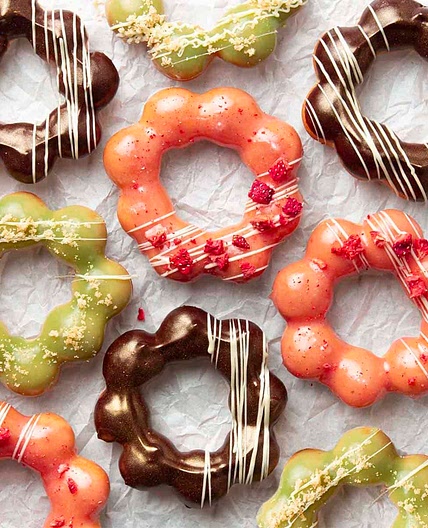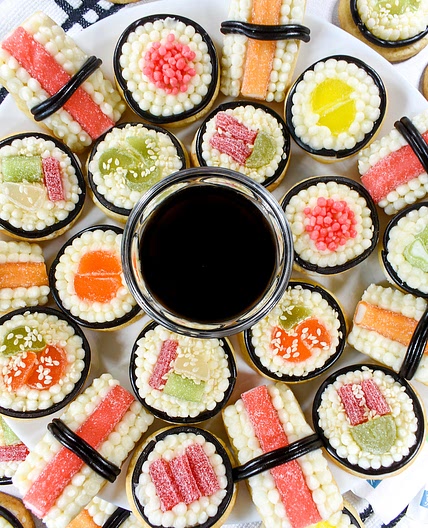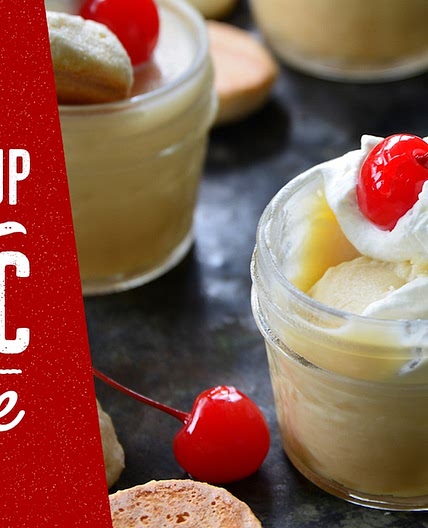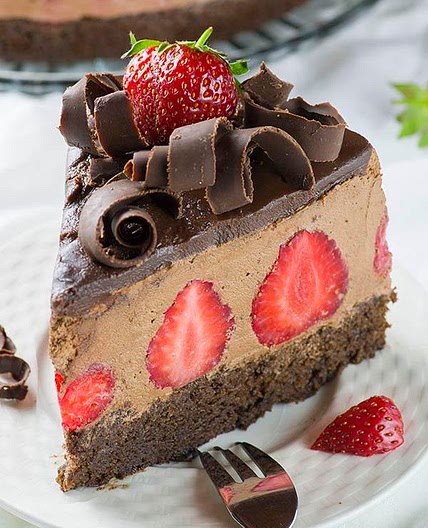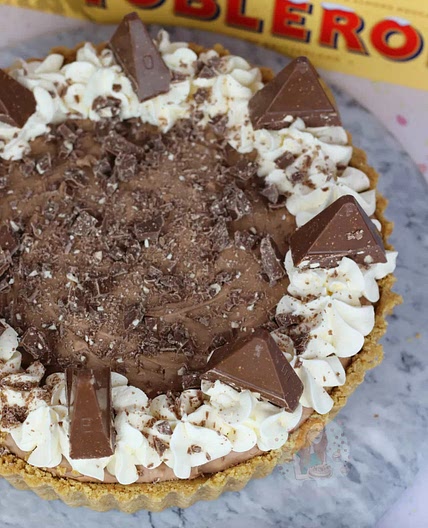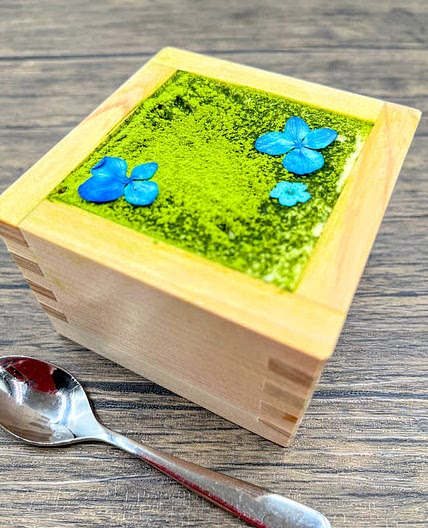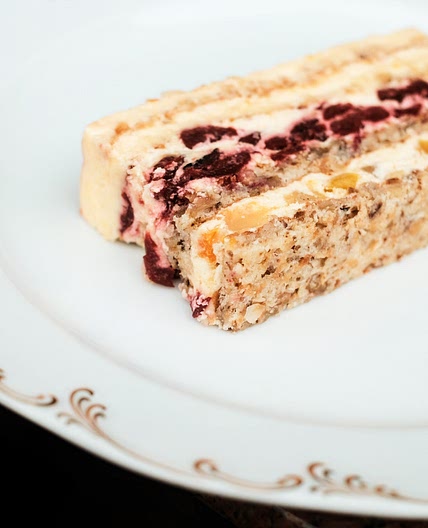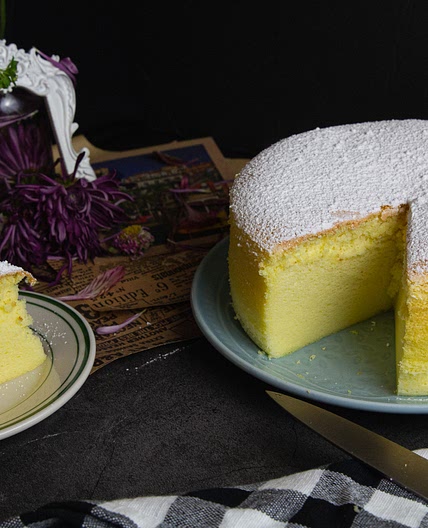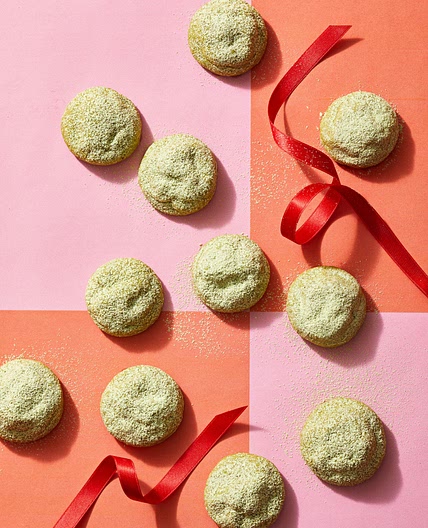Japanese Cheesecake
100%
0
Nutrition balance score
Unbalanced
Glycemic Index
64
Moderate
Glycemic Load
17
Moderate
Nutrition per serving
Calories285.3 kcal (14%)
Total Fat16.8 g (24%)
Carbs27.2 g (10%)
Sugars15.4 g (17%)
Protein6.8 g (14%)
Sodium122.7 mg (6%)
Fiber0.3 g (1%)
% Daily Values based on a 2,000 calorie diet
Ingredients
10 servings
Wet Ingredients
250mlmilk
250gcream cheese
block, cubed and softened at room temperature
60gbutter
softened at room temperature
6egg yolks
Dry Ingredients
Meringue
Substitute Cake Flour
Instructions
Step 1
Preheat oven to 150C (302F).
Step 2
Use a large bowl, pour in milk. Place the bowl over simmering water. Don’t let the bottom of the bowl touch the water. Add cream cheese, stir occasionally, until completely dissolved and the mixture turns smooth. Stir in butter, till dissolved. Remove from heat. Let cool down a bit, then add the egg yolks and combine well. (Note: Make sure the mixture is not too hot, as you don’t want to cook the egg yolks at this stage.)
Step 3
Combine cake flour and corn flour. Sift in the flours into the cream cheese mixture, a small amount at a time. Mix well between every addition, and make sure there aren’t any flour lumps. Stir in freshly grated zest. Set aside.
Step 4
Place egg whites in a large clean bowl. (Note: Make sure there’s no oil or water in the bowl at all.) Use an electric mixer to beat the egg whites for 3 minutes, then add cream of tartar and blend again. Pour sugar in the egg whites and blend until very stiff peaks form. (Please refer to this video: How To Beat Egg Whites.)
Step 5
Fold-in the egg whites into the cream cheese mixture gently with a rubber spatula just until all ingredients are incorporated. Do not stir or beat. For a better result, fold in egg whites with a small amount at a time, at least for 3 times. (Please refer to this post with video: How To Fold-in Egg Whites).
Step 6
Pour the mixture into the two baking pans that have been lined with parchment. Place the pans into another larger baking tray. Add hot water in the tray up to half way. Bake for about 50 min @ 305°F (or 35 min @340°F) . Test with a needle or skewer that comes out clean.
Step 7
Turn off the oven. Leave the oven door ajar for 10 minutes. Remove from the oven and remove from the pans. Let cool completely on a wire rack. Chill in a fridge for about 3 hours. Enjoy!
Notes
Step 8
Get cream cheese block to make this cheesecake. Don't ever use the cheese spread. Your cheesecake will be too wet otherwise.Get cream cheese block to make this cheesecake. Don't ever use the cheese spread. Your cheesecake will be too wet otherwise. The delicate, velvety smooth texture of this cheesecake is produced by two low-protein flours, cake flour or corn flour. The beaten egg whites generate very small air pockets in the inner structure of the cake. So, when it comes to making this cake, it’s very important to know how to beat egg whites and how to fold-in egg whites properly. I’ve uploaded two videos on youtube for those who need them, here and here. To prevent the surface of the cheesecake from cracking: use low temperature and water-bath method during baking. The surface of the cake has a tendency to rise high to a point that breaks the structure. So, the basic principle is to keep the oven as low as the recipe suggests as 150C (302F). Mind you, every oven is so different, know your oven. And you have to keep an eye on it when baking. When the cake surface rises too high, that means the temperature of your oven is too high. Reduce the temperature accordingly.
Step 12
To prevent the cheesecake from shrinking: open the oven door ajar for 10 minutes or so, and let your cheesecakes cool down gradually. But don’t keep them there too long because moist would develop at the bottom of the baking pans.
Step 13
If using a loose base cake tin, cover the outside of the tin bottom with double layers of aluminium foil to prevent water from seeping in.
Making Substitute Cake Flour
Step 9
Sift flour and cornstarch together in a large bowl. Repeat so the mixture is sifted twice. Sifting not only mixes the two ingredients together appropriately, it aerates the mixture so the consistency is similar to real cake flour.
Step 10
Measure (spoon & level) ½ cup (55g) from this mixture. Sometimes sifting can produce more volume since it’s adding air.
Notes
1 liked
0 disliked
There are no notes yet. Be the first to share your experience!
